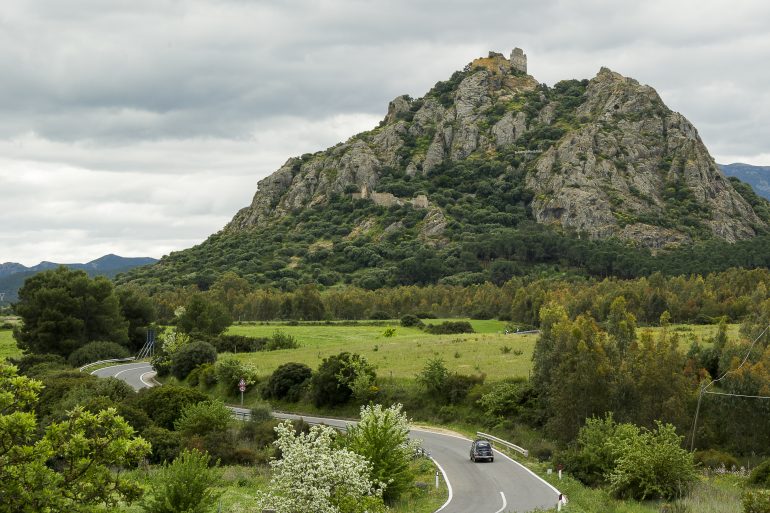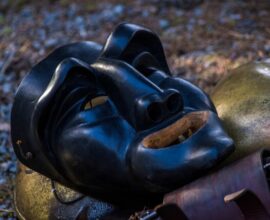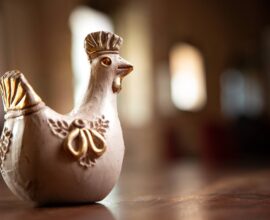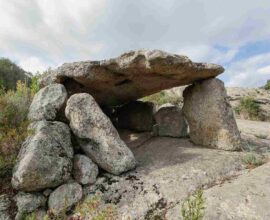Castles in southern Sardinia: the five most important ones
Castles in southern Sardinia: the charm and elegance of ancient homes
The castles in the south of Sardinia were built over the centuries mainly for strategic reasons and for defence. They are now places that evoke intriguing stories connected to families, traditions, mystery and nobility.
Positioned on hilltops, on high spurs of rock, on headlands overlooking the beautiful Sardinian sea and surrounded by the scents of unspoilt nature and landscapes of ancient Ichnusa, these castles hold secrets and legends from centuries ago and attract visitors from all over the island and the world.
A castle is an architectural structure consisting of several fortified buildings, in the past, it would house a nobleman or a lord along with his army to defend the estate and its inhabitants.
Over the centuries, the term “castle” has been applied to palaces and fortresses, however, there are subtle but substantial differences between the structures: In fact, a palace is not fortified, while a fortress wasn’t always used as a noble residence.
The word castle comes from the Latin castěllum, diminutive of castrum, the rectangular encampment such as a stable or provisional structure where a unit of the Roman army legion resided with a surrounding trench to protect it.
The idea of building constructions to defend a territory started with the fall of the Western Roman Empire. In the beginning, many castles were isolated wooden watchtowers to protect the land and to surveil people crossing narrow places. Castles were later fortified buildings that sometimes contained entire villages and became administrative and legal centres throughout the Middle Ages.
Castles were built in large cities in the late Middle Ages, meanwhile, the citadels and the so-called “modern fortification”, or “Italian fortification”, date back to the fifteenth century when the castles were restored as mansions for noble families.
Castles in southern Sardinia to be visited at least once:
- Castello di San Michele: the fortified building, dating back to the Judean period, is on the outskirts of Cagliari on the homonymous hill from which you can admire some of the landmarks of the city, such as the famous beach of Poetto and the Sella del Diavolo. The quadrangular structure, made of limestone from the quarries of Bonaria, originally had four large angular towers, of which only three remain today, connected by partially ruined walls. The oldest part of the castle includes the two towers on the north-east and south-east side, built with perfectly squared ashlars, while the south-west tower was built with a more coarse masonry technique and mixed stone. The fortress was surrounded by a wide, and deep moat and had a drawbridge of which there are traces in the grooves at one of the entrances. On the western side of the castle, you can admire the remains of two side-by-side entrances that correspond to the oratory of San Michele Arcangelo, a building with two naves that served as the chapel of the castle. The castle of San Michele is now home to some of the most important artistic events in Sardinia.
- Castle of Salvaterra: also known as the castle of San Guantino, is in the town of Iglesias and was built in the medieval ages, probably by the will of Count Ugolino della Gherardesca, whose story was described by Dante in the XXXIII canto of the Inferno of La Divina Commedia. The castle resides above the town, on the hill from which it takes its name, facilitating communication with other castles scattered throughout the territory, such as the castle of Gioiosa Guardia, the castle of Acquafredda and the castle of San Michele di Cagliari. The castle of Salvaterra was conceived as a fortification to guard the city and its surroundings and has a four-sided structure with walls to the east and north built in rows of alternating stone and brick. Today, the building hosts many events and has a beautiful view of the city and its surroundings.
- Acquafredda Castle: built in the thirteenth century, this castle is near the town of Siliqua, on a volcanic hill, and dominates the entire valley of the Cixerri. The discovery of a papal bull, dated July 30, 1238, suggests that the building existed as early as 1215, but just like the castle of Salvaterra, it is believed that the castle was built at the behest of Count Ugolino della Gherardesca. The castle of Acquafredda controlled the access to the mining city rich in deposits of silver, zinc and lead but when the count fell into disgrace and was imprisoned in Pisan tower of Gualandi, the castle passed under the direct control of the Republic of Pisa. It later became the property of the Aragonese and then of the King of Sardinia Vittorio Amedeo. The building is made up of several bodies of walls on three levels, which were intended to create multiple lines of defence to protect the castle from enemy attacks. In the highest part, at an altitude of 256 m above sea level, rise the imposing walls of the fortified nucleus, the Mastio, home of the castellan which was accessed from the north side. The cistern tower stands about 200 meters above sea level and has three connected rooms, open to the public, while the third defensive line, the Borgo, has a wall with three towers. In 1993, Acquafredda Castle was nominated a Natural Monument.
- Castle of Sanluri: also called the castle of Eleonora d’Arborea, the fortified military building of the judicial era had both a defensive and residential function and was one of the strongholds of control of the border between the Judicate of Cagliari and Arborea. This castle built between 1188 and 1195 by judge Peter I of Arborea, was where the battles took place between the troops of the Kingdom of Arborea, led by William III of Narbonne, and the army of Martin I of Sicily, heir to the Crown of Aragon. The imposing building at the edge of the Campidano, below the hills of Marmilla, has a square plant with 26-meter walls with a thickness of two meters, while at its corners rise four towers. The inside court has a “T ” stone staircase that leads to the first floor of the so-called “palace” built in 1355 by orders of Peter IV of Aragon. Today you can visit: the Museum of the Duke of Aosta, the Wax Museum, the study of General Nino Villa Santa, where his correspondence with Gabriele D’Annunzio is kept, the memories related to the family of Napoleon, the bedrooms furnished with furniture of the seventeenth, eighteenth and nineteenth centuries, the Gondi Room, the Hunting Room and the Queen’s Room.
- Villasor Castle: also known as the home of the Alagon or as the Silliver Castle, is a fortified building in the historic centre of the city from which it takes its name. It was built in 1415 by order of feudal lord Villasorof Giovanni Siviller, who obtained authorization from the archbishop of Cagliari – the fortress is on the remains of the ancient parish church of Santa Maria, the building also had the function of defending the land from possible attacks by the Arbonese rebels. The castle and the complex of buildings that surround it are in a trapezoidal area between Via Baronale, Via Castello and Via Cagliari, and has a “U” plan surrounding the quadrangular inner courtyard. On the main facade, facing Via Baronale, there is the portal with a round arch and windows with frames carved in Gothic-Catalan style, while the walls have the Guelph battlements on top. The interior is on two levels and one of the rooms has a wooden coffered roof dating back to the fifteenth-sixteenth century. When feudalism was abolished, the building was used in many ways such as barracks, a prison and a school, until it was used as a simple agricultural shed. Owned by the municipality of Villasor since 1991, the castle has undergone numerous restoration works and now hosts exhibitions and conferences.
Do you want to discover the beautiful castles of South Sardinia and have a dream holiday in a true paradise? Book your stay at Forte Village Resort in Sardinia.






